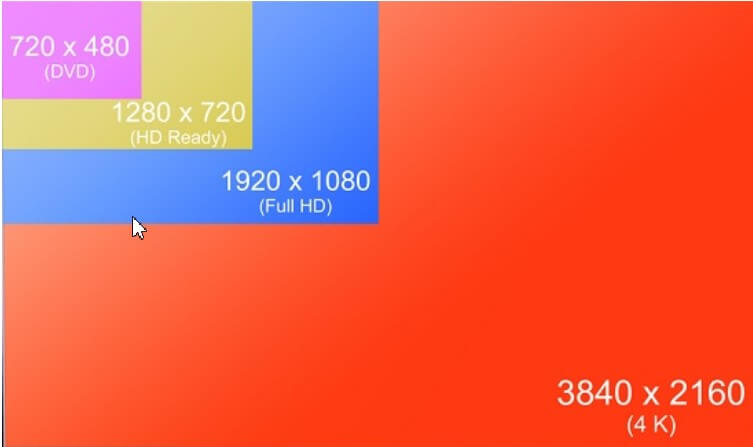When you are struggling with a new TV choice, you are faced with new terms that were until recently almost unknown. Is there a difference between 4K and UHD ( Ultra HD ), and if so, what are the changes?
The standard used for a decade now for high definition TV is called High Definition Television (HDTV). With very few exceptions (TVs presented as HD Ready or support a maximum resolution of 1280×720 pixels or 720p), all recently made products are at least Full HD or allow you to reach up to 1920×1080 pixels (1080p).
In this context, the letter “p” stands for progressive: Each image is produced on the screen frame by frame. The alternative is 1080i, where “i” stands for interlaced: in this case, the odd and even lines making up each image are produced in different frames. The result is a qualitatively inferior image.
The term 4K refers to a screen that can handle a horizontal resolution of approximately 4,000 pixels.
This is a “unicum” because we usually refer to the number of pixels vertically (think 1080p and 720p).
The Digital Cinema Initiatives (DCI) standard is the most common for digital video content production and refers to the use of a resolution of 4096 x 2160 pixels.
UHD-1, a format often referred to when using the term 4K UHD, simply 4K or, sometimes, 2160p, is a standard that involves the use of a resolution equal to 3840 x 2160, four times the number of pixels of Full HD.

Since the aspect ratio (” aspect ratio ” in Italian; it is the mathematical ratio between the width and height of an image) of the DCI standard is poorly indicated for most video content, the vast majority of most modern TVs is UHD-1 compatible.
There is also the Full Ultra HD format, which involves using a resolution of 7620 x 4320 pixels.
At present, there are very few screens that can reproduce images at such a resolution, and, in any case, they occupy a very high market segment (the smaller Full Ultra HD display has a diagonal of 85 inches…).
A few days ago, the news of the first tests, carried out in Japan, was for the transmission of 8K video content: Japanese public TV experiments with the 8K format.
In general, the terms 4K and UHD can be considered substantially overlapping, at least for common use.
Currently, the purchase of a 4K TV does not make an obvious leap forward compared to the previous generation products (Full HD). Unless your eye is very trained and you sit within 2 meters of a 55-inch 4K TV, you won’t be able to tell the marginal difference with a 1080p.
Therefore, the aspect linked to the resolution is certainly not the main reason that may lead to evaluate the purchase of a 4K TV. Ultra HD Premium products only, which can offer greater colour depth (over a billion colours) as well as a wider dynamic range (will allow you to perceive a higher level of sharpness, details, clarity, colours, and saturation), will be placed “visibly” a few steps higher than the current standards.

The Ultra HD Premium logo is displayed by manufacturers such as LG, Panasonic, and Samsung. Sony does not use that logo, but many of its newer TVs embrace the Ultra HD Premium specifications and exceed them. Sony is, in fact, one of the members of the UHD Alliance who worked on the certification.
If you decide on a 4K TV in the future, it will be necessary to keep in mind that HDMI 1.4 cables support the UHD format, but only HDMI 2.0 cables will allow you to play UHD content at 60 fps. Sure, most 4K content is at 30fps, but the rate at which frames are transmitted will quickly increase.
Netflix has been able to transmit 4K video content for some time (only to “premium” subscribers). Still, a connection that can guarantee at least 25 Mbps of downstream bandwidth is highly recommended (see this page ).

A tech-savvy writer with a knack for finding the latest technology in the market, this is what describes John Carter. With more than 8 years of experience as a journalist, John graduated as an engineer and ventured soon into the world of online journalism. His interest includes gadget reviews, decoding OS errors, hunting information on the latest technology, and so on.













![How to Access UFC 302 Live Stream Free [Updated 2024] UFC 260 Live Stream Free](https://techsmartest.com/wp-content/uploads/2022/03/UFC-260-Live-Stream-Free-324x160.jpg)